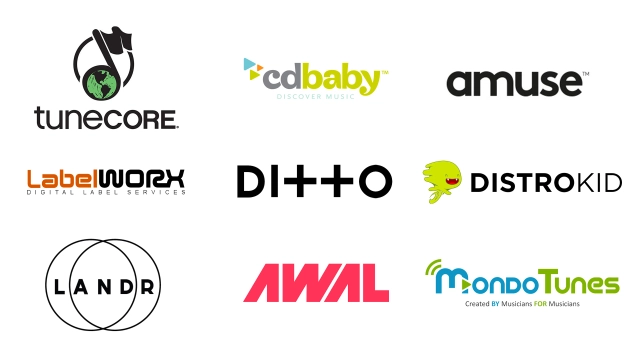Whether you’re a musician, producer, or label looking to make your music available around the world, selecting the right music distribution company is critical. With so many options on the market, it can be difficult to know which platform best suits your needs. To help you decide, let’s take a look at the pros and cons of some of today’s most popular music distribution companies.
Subscription-Based Services
Pros:
Subscription-based services such as Apple Music and Amazon Music Unlimited offer convenience and access for customers who are willing to pay a flat monthly fee. These services provide listeners with unlimited streaming access to millions of tracks from top artists in one place for an affordable cost. Plus, subscription-based services typically have great user interfaces that make it easy to search for specific songs or artists quickly.
Cons:
For musicians and labels that rely on royalties generated by sales or streams, subscription-based services may not be the most lucrative way to distribute their music. Although they generate more total revenue than free streaming sites like YouTube, individual artist payments tend to be much lower because all profits are pooled together before being divided among participants in the service.

Streaming Sites
Pros:
Streaming sites such as Spotify enable fans to listen to whatever track they want for free — but still generate money for artists through ads or subscriptions. As a result, these sites can produce significant revenues when used properly — especially if an artist has built up enough popularity beforehand. In addition, streaming sites often promote new releases through featured slots on their homepage or curated playlists which can help drive additional traffic to an artist’s page upon release.
Cons:
One potential downside of streaming sites is that not all platforms offer robust royalty payment systems which could leave some independent artists out of pocket when their project goes live online. Furthermore, unless an artist has already built up a large following before going live on a platform like Spotify there is no guarantee that anyone will actually stream or purchase their tracks – making it difficult for smaller acts without much name recognition to make any money from these types of outlets alone.
Digital Stores
Pros:
Digital stores such as iTunes and Google Play offer users direct downloads at set prices per track/album (or higher depending on quality). This makes them a great source of revenue for artists who want to sell physical copies of their work directly from their own website or through other outlets such as Bandcamp. In addition, digital stores provide detailed analytics on how many people have bought each song – giving musicians and labels insight into where to focus future marketing efforts to maximize sales in the long term.
Cons:
Digital stores require considerable upfront effort for both musicians and labels to begin selling their material online – including setting up accounts with each outlet they wish to use, as well as coordinating promotional campaigns prior to launch to ensure maximum visibility across multiple channels simultaneously. In addition, the fees charged by these types of outlets can range from 10% to 25% depending on the type of deal agreed, meaning less money ends up in the hands of those involved in the release process itself.

Physical retailers
Pros:
Physical retailers such as record stores, CD shops etc…….. offer tangible products directly to the customer allowing them to experience sonic artistry firsthand. Additionally, offering merchandise alongside albums and CDs further enhances the customer shopping experience and allows bands to monetize products beyond the audio recordings themselves.
Cons:
The price points associated with physical retail are typically significantly higher than digital downloads due to the production costs involved in manufacturing pressings, packaging, and shipping materials, resulting in an overall lower return on investment. Similarly, physical retailers often require significant lead times to coordinate production, stock, and pre-order before the release date, meaning that projects can take longer to reach the public once they are ready for sale…
At the end of the day there is no magic bullet when it comes to distributing your music globally, regardless of whether you decide to go down the subscription-based service, streaming site, digital store, or retailer route, having the right strategy in place is critical to ensuring the success of the venture in terms of finding the perfect platform fit, needs, budget constraints, timeframes involved and ultimately key to achieving the desired results.


